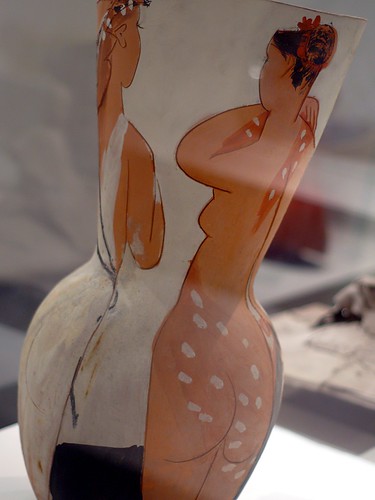Posts Tagged ‘Understand’
Abstract Paintings – How to Understand Abstract Art

“Everyone wants to understand art. Why not try to understand the song of a bird?…people who try to explain pictures are usually barking up the wrong tree.” – Pablo Picasso
What Picasso says about understanding art is very relevant to how we approach abstract paintings. Many people think that abstract paintings must have a specific meaning of some sort, which could be clearly understood and articulated if only they knew how. This misconception is not helped by the endless supply of people prepared to spout nonsense about what they think the artist was trying to say. The almost inevitable consequence of this situation is that people can either feel as though they are being excluded from sharing in some secret knowledge, or alternatively conclude that abstract painting is in fact all a sham. Either way, the result is that many people do not feel well-disposed towards modern art or abstract paintings.
I certainly identify with Picasso‘s remark as far as my own paintings are concerned. If I had a specific message or a meaning that I could articulate in words, then I would articulate it in words – the painting would have no purpose. The whole point of creating an abstract painting is that it embodies something that only it can, in a way that cannot be put into words. It is not an essay it is a painting – it encompasses and expresses things in a language that is unique to the medium of paint. That is why we should not try to ‘understand’ abstract paintings in the way people sometimes feel they ought to be able to.
The viewer should not look for a clear narrative in an abstract painting – it is not going to tell a story, or refer to an external ‘subject’ in the same way that a figurative painting will. But that does not mean there is no meaning or no subject, or that abstract paintings cannot communicate with and move people. When asked about subject matter, the Abstract Expressionist artist Jackson Pollock said, “I am the subject”. Pollock’s statement is not just true, it is inevitable.
The experiences, personality, memories and mood of the abstract artist cannot help but be fed into the painting if the artist approaches the work in an open and honest way. I do not need an external subject or idea before I can create a painting – I simply begin. The fact that I am me and no-one else is what makes my work different to anyone else’s, and the same is true of all artists. The colours I choose, the marks a make, the accidents I choose to leave, or to obliterate, these are all things that I choose because of who I am.
If you were to present several different artists with the same basic design on a canvas and ask them to pick up a brush and develop the painting, the differences in what they would choose to do would be enormous. I have watched other abstract artists at work on paintings and thought “I would never in a million years have chosen that colour and put it there.” Not because I think it is wrong or bad, but because they are who they are and (to quote that other leading artist, Morrisey!) “only I am I”.
See Also : Personal Transporter. At Segway outdoor microphone SugarDecor
To Understand Poland 39-89 Zrozumieć Polske (english subtitles)
Oryginalny głos prezydenta Stefana Starzyńskiego. The move is allegoric defend of Warsaw in September 1939. Voice is originally recorder speeches of Stefan Starzyński, president of Warsaw, killed by Germans. (LUC – TRIBUTE TO STEFAN STARZYŃSKI) OBRAZ – PLATIGE IMAGE (ART DIR. MICHAŁ DZIEKAN)
My Links : Personal Transporter. At Segway welcomeholidayservice.com